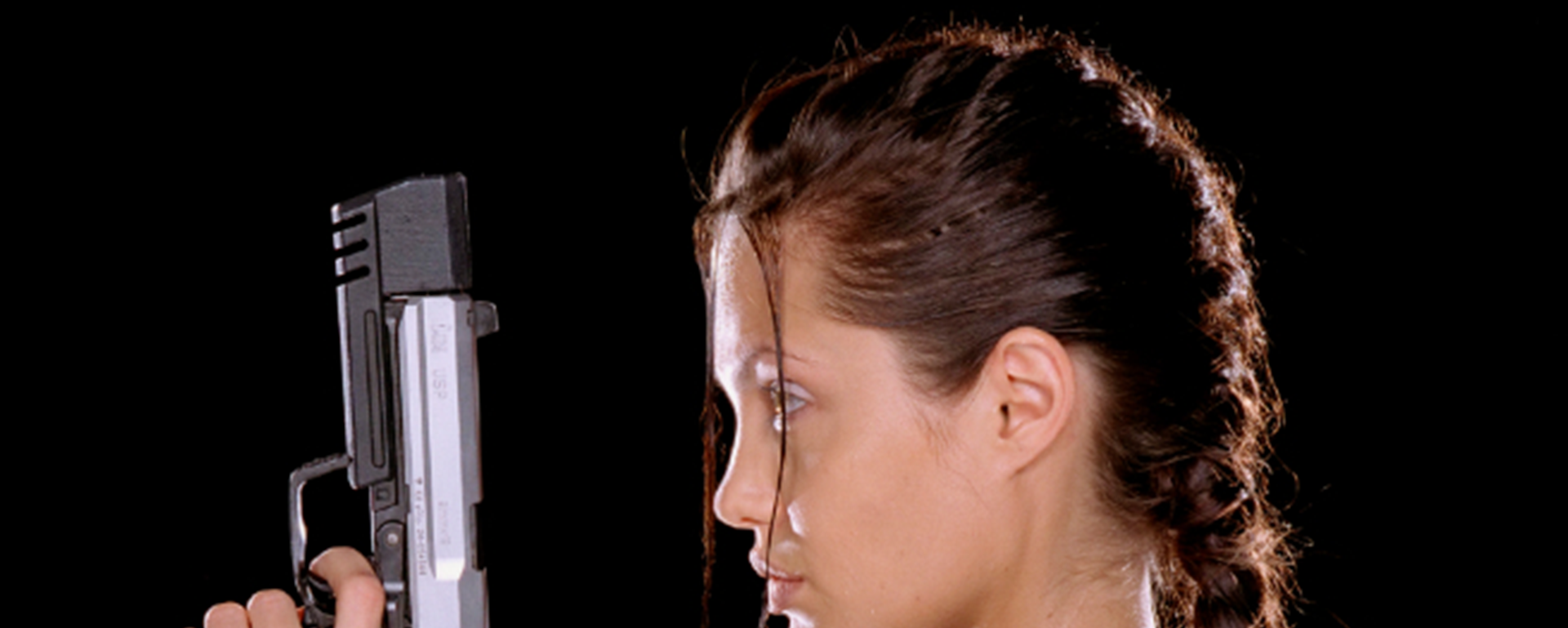
Lara Croft: Tomb Raider
In June 2001, the big budget film version of the phenomenally successful video game series was submitted to the BBFC for an advice viewing. An advice viewing is a facility we offer distributors in which works (sometimes unfinished, as in this case) can be viewed by senior or experienced examiners, who can give the company advice as to the likely category a work will receive. Sometimes companies alter films on the basis of the advice received to make it more likely that they will achieve a desired category.
UIP (United International Pictures), the film company, stated that they were keen to get a 12 classification for the film (the 12A film certificate only became available to distributors in 2002).
In the original submission of the film, there were several 'glamorising' shots of knives: the weapons were depicted in rather fetishistic detail, with close-ups, slow motion effects and glinting lighting. There was a great deal of emphasis on the mechanics of handling these weapons, with characters twirling them about to show them off. The association of these weapons with the highly sexual and sexualised figure of Lara Croft was felt to increase the potential appeal to adolescents.
At 12, BBFC Guidelines in 2001 stated that 'Realistic and contemporary weapons should not be glamorised'. In the same spirit, today’s Guidelines at 12A state that 'Easily accessible weapons should not be glamorised'. The BBFC is particularly concerned about knives as they are easily available in most homes and knife-crime amongst young people appears to be on the rise (in a 2003 Youth Justice Board/MORI survey, 62% of excluded pupils admitted to carrying knives).
The first submission of the film also contained a head-butt delivered by the heroine and this too raised concerns. A head-butt has the very real potential to kill and it was felt that the fact that the heroine character of Lara Croft delivered it increased the potential for imitation amongst adolescents.
Following the advice viewing of this rough cut version, although the examiners acknowledged that the content was predominantly PG level and that the target audience started at PG, the company was advised that the presentation of weaponry, particularly the flick knives, and the head-butt, were of concern and would probably result in the film receiving a 15 certificate.
The film was then submitted in its completed form and again came with a 12 request. The then Director of the BBFC, Robin Duval, sat in on this screening. The film appeared to be unchanged from the advice version and a formal cuts list was issued. This requested that the company ‘Significantly reduce the sight of the flick knife, especially shots which emphasise its attractiveness. Remove in particular the sight and/or sound of the knife opening, close shot of the bloody blade and clear sight of the knife being twirled. In final fight, remove all sight of head-butt delivered by Lara Croft.’
Less than two weeks after the rough-cut version was seen, the film was submitted in its final, cut, form. The director, Simon West, appeared to have taken the BBFC's requirements very seriously and the scenes involving knives were reduced and the overt glamorisation removed. The head-butt was also edited out and replaced by an indistinct punch. The film was consequently passed at 12. However, the violence in Lara Croft, particularly in the final fight scene, remains at the higher end of the 12 spectrum even today, with some heavy blows and kicks.
Interestingly, the only complaints that BBFC received about the category decision were from younger fans of the video games, who were restricted from seeing the film even at 12. Now, after the introduction of the 12A category in 2002, if parents wish to take mature younger children, they may do so at their own risk as long as they accompany them throughout the film. However if parents wish to take children under 12 years old to a 12A rated film, they should consider carefully the film's BBFCinsight before they do so, and also consider how robust the child is.